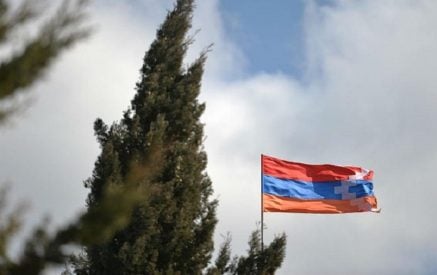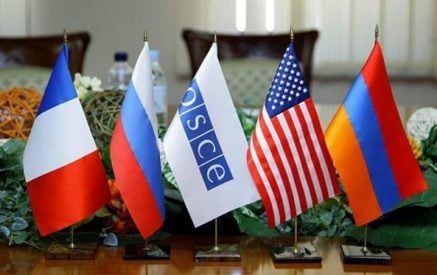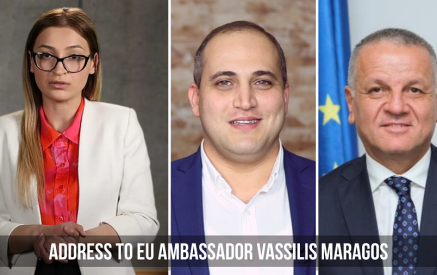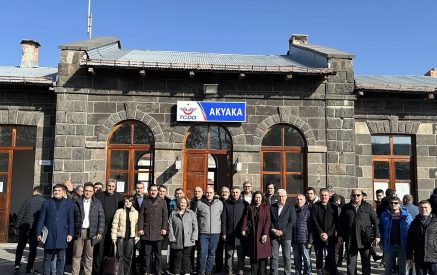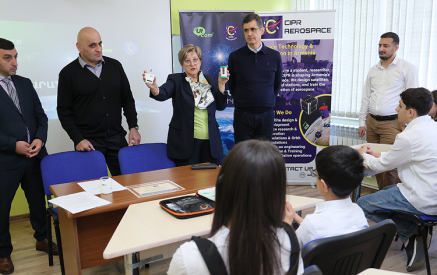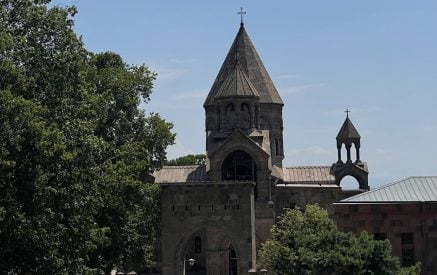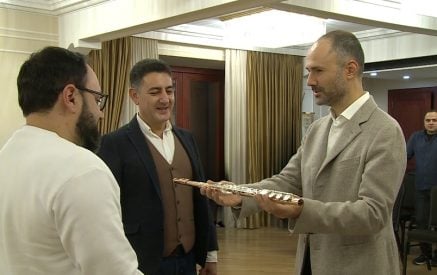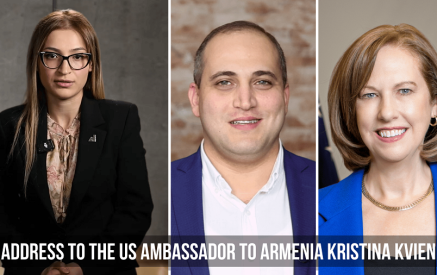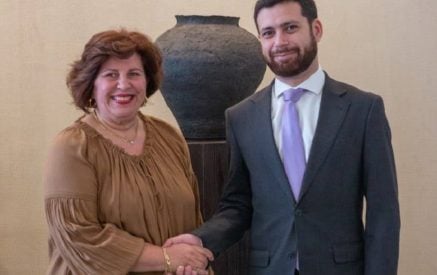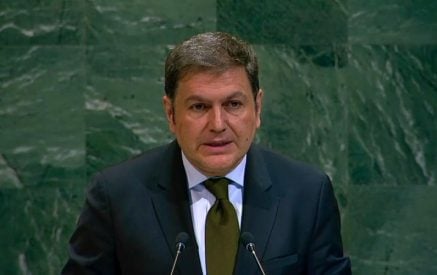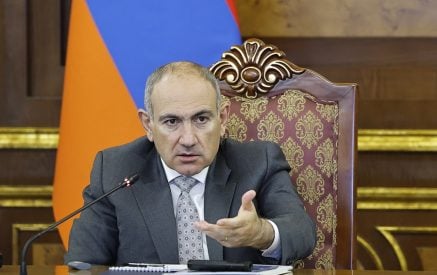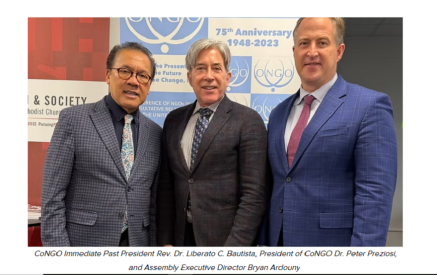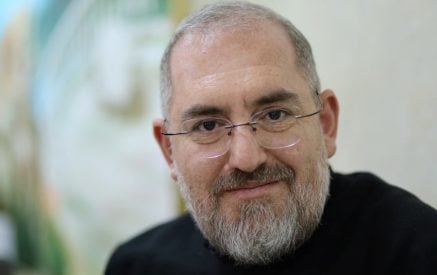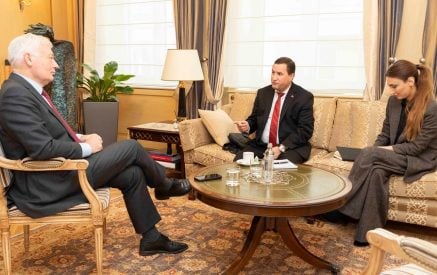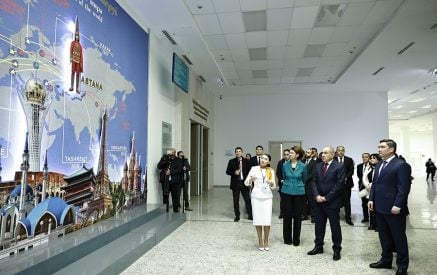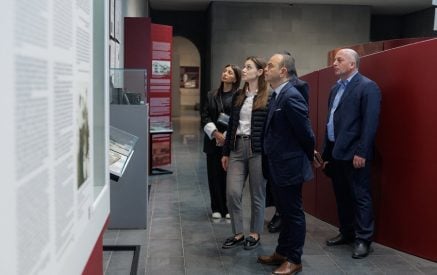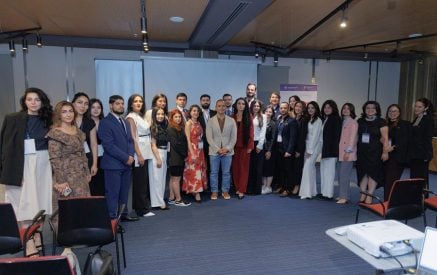Anahit Margaryan, a doctoral student at the University of Cádiz, is currently in the final stages of establishing the Hispano-Armenian Center at her university, which has a counterpart in Armenia.
In a recent interview, she said that in September 2023, the Yerevan segment of the Hispano-Armenian Center was inaugurated at Yerevan State University. The center will be a “a collaborative effort involving University of Cádiz officials and the International University Center for Eastern Europe and Central Asia [CUNEAC] Center of the University of Cádiz,” she added.
The center in Cádiz will receive support from the Armenian government and the Armenian Embassy in Spain. In addition, she explained, the center will “engage in various activities, ranging from research on Armenian studies across all available research areas at the University of Cádiz to cultural and language events, courses, conferences, and student and university staff exchanges. It is noteworthy that the Hispano-Armenian Center is unique as the first-ever Hispano-Armenian Center in Spain.”
Margaryan, who hails from Armenia, studied at the Faculty of European Languages and Communication at Yerevan State University.
She recently returned to Spain from a visit to the US, where she had conducted research at the University of Michigan and Harvard.
One unusual aspect of Margaryan’s academic field is that she is getting her PhD in linguistics rather than history.
She explained, “My academic journey began with a deep interest in the Spanish language and literature, leading me to fluent proficiency. However, my equally strong passion for Armenian history and political studies guided my doctoral dissertation, titled ‘The Discourse of Conflict in the Spanish Sources on the Armenian Cause and its Translations.’ This dissertation explores the linguistic aspects of historical events, specifically the Armenian Genocide and the Nagorno-Karabakh conflict. The research is being done within the framework of the Applied Linguistics doctoral program at the University of Cádiz under the supervision of Professor Miguel Casas Gómez and Professor Pamela Faber of the University of Granada, who are distinguished scientists in Europe. Miguel Casas is the director of the Institute of Applied Linguistics at the University of Cádiz, which is considered an exclusive research center in Europe. Pamela Faber has held the Chair of Translation and Interpreting at the Department of Translation and Interpreting of the University of Granada since 2001.”
As for how history and linguistics work together, she noted, “Science nowadays tends to include interdisciplinary approaches. When we talk about linguistics, people may imagine an analysis of letters or grammatical features of some language. In other words, analyze language features in a closed circle. However, the modern approaches may include a wide range of studies including not only history, political studies, and sociology, but can even include clinical or genetic studies depending on the purpose of the investigation.”
She continued, “Linguistics and Armenian history, for my research, are intertwined. I try to address the linguistic phenomena concerning the language of the conflict in the Hispanic sources on the Armenian Cause (including both the Armenian Genocide and Nagorno Karabakh conflict), the lexicon developed in the conflict, the discursive strategies, and mechanisms, also to mark the extralinguistic factors that affect both the original works and their translations into other languages at the lexical level and beyond the linguistic limits themselves. As you can see, neither History nor Political Sciences can be excluded from this Linguistic research. Moreover, they are needed.”
The initiative, Margaryan said, has received support from political and academic spheres in Spain. “The vice-rector for internationalization of the University of Cádiz, Rafael Jimenez Castañeda, the head of the Linguistic Policy Department Javier de Cos, and the head of the University Center for Cooperation with Eastern Europe and Central Asia Andres Santana were the ones to visit Yerevan State University to inaugurate the Yerevan headquarter of the Center few months ago,” she explained.
The scope of the center will include modern Armenian history too, she explained. “It’s essential to acknowledge that universities generally follow ethical guidelines when addressing sensitive topics. We aim to cover diverse topics of Armenian interest that are relevant to the Spanish academic and civil society, however, all are approached from academic and scientific perspectives. The vision of the Center is to become a strong university center with big international academic involvement.”
Margaryan is a fan of Spain and the Spanish language. That love goes back to age 15, when she overheard a friend speaking Spanish with her mother to keep their conversation private from Armenian friends. “The idea of this seemingly secret communication fascinated me, and I became determined to learn this not-so-common language. It’s amusing because Spanish, as the world’s second-most-spoken language, was not very common in Armenia at that time. Ironically, now, living outside Armenia, Armenian serves as a secret language since only a select few can speak it. This curiosity about secret communication led me to choose Spanish as my career language. My academic journey brought me to Spain for my master’s studies. And once you are there, it’s very hard not to admire the vibrant and abundant Spanish culture.”
While pursuing her doctorate, she has released a book titled G. Guarch: Interview for the History, a Spanish-Armenian publication released by Yerevan State University in 2022. “It is dedicated to the great philanthropist, Spanish novelist Gonzalo Hernandez Guarch, with a focus on his ‘Armenian Trilogy,’ contributing to the understanding of Armenian-Turkish relations,” she explained. The book was presented at the University of Cádiz and the Frankfurt International Book Fair.
As for Karabakh and its tragic fate, she said, “I find it extremely frustrating that events of such magnitude can happen in the modern world and be largely ignored. The tragedy that our people experienced is not a fashionable topic to discuss at the governmental level of different countries. In contrast, conflicts like the Ukrainian-Russian and Palestinian-Israeli disputes are considered top priorities on all social media platforms.”
She added, “This distinction between ‘fashionable’ and ‘non-fashionable’ conflicts is disheartening, as it deviates from basic humanity and underscores the influence of governments in shaping the narrative around certain issues, turning them into trends. The impact of Artsakh reality on me is a renewed commitment to build a strong, independent country that doesn’t rely on external support or consideration. We strive to be the best we can be, even if achieving that goal takes decades, steadfastly working towards this. If not this, what else can we do?”
While she is just at the beginning of her career, looking ahead, she said, “My ultimate career goal is to have my contribution to building strong scientific ties between Spanish and Armenian academic institutions and bring Armenian science to a strong international involvement by strengthening the Hispano-Armenian Center and bringing more interdisciplinary and contemporary scientific topics to the forefront.”


